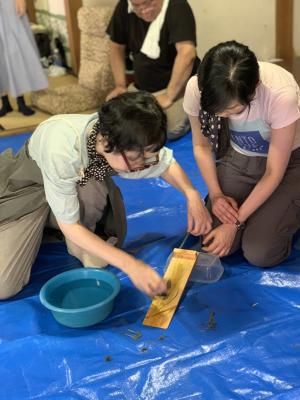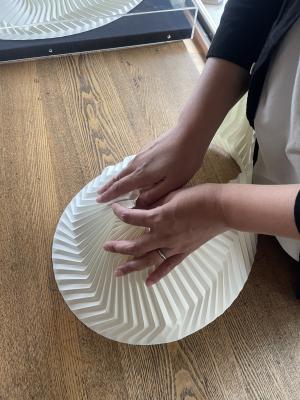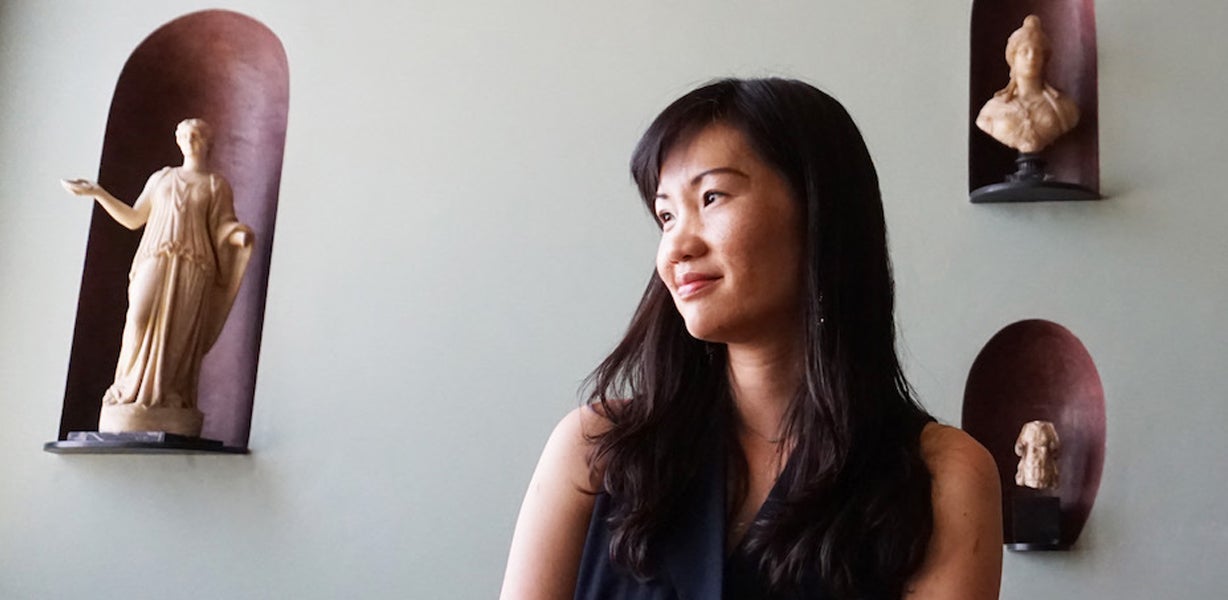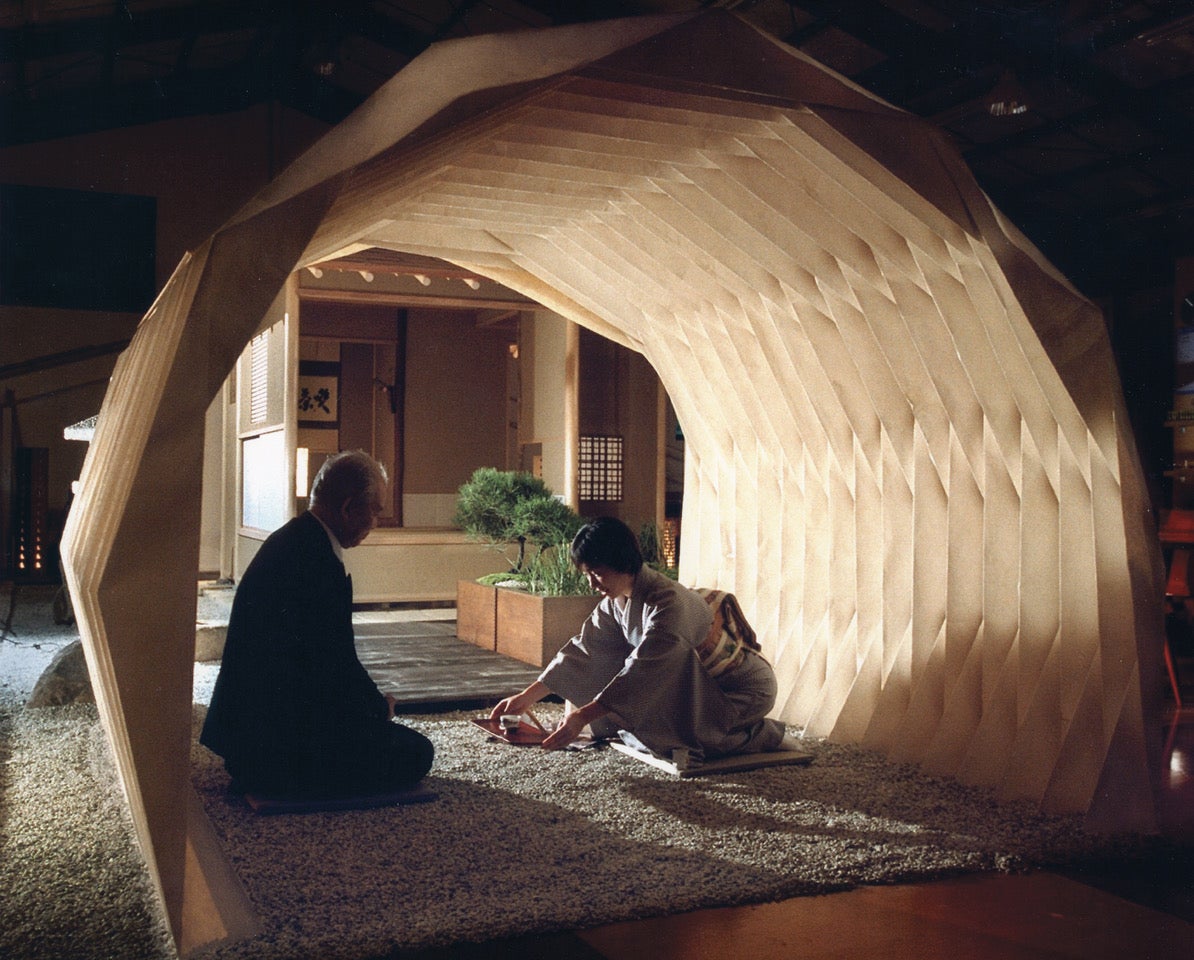Five questions for Stephanie Su
As a child, Stephanie Su enjoyed painting and drawing, but it wasn’t until she studied art history that she realized the importance of art in understanding a culture.
Now an assistant professor of Asian art at CU Boulder, Su’s scholarship is motivated by a strong interest in the historiography and methodology of art.
“Initially, I studied European art history, with a focus on 19th century French art,” she said. “At that time, I worked as an academic part-time at the deputy director’s office at the National Palace Museum in Taipei, one of the best museums in the world for Chinese art. My experiences of studying art history and working at the Palace Museum stimulated my intellectual interest in understanding the relationship between art, institutions and politics.
“Growing up in Taiwan, I felt comfortable about my affinity with Chinese and Japanese cultures, yet I also found it equally difficult to position myself and Taiwan within East Asia.”
After earning her Ph.D. at the University of Chicago, she went on to pursue research, editorial and curatorial projects in the U.S., Europe and Asia. She arrived at CU Boulder in 2018.
“After working abroad, I really appreciate the resources that American research universities such as CU Boulder have invested for faculty and students,” she said. “CU Boulder also has a nice art museum. Besides teaching and researching, I also like to curate exhibitions and get involved in public education for communities. CU Boulder is an ideal place for me.”
1. What is washi paper, and how did you decide to make it a central focus of one of your research projects?
Washi paper refers to handmade Japanese paper, using fibers from the inner bark of three trees: gampi, kōzo or mitsumata. Washi paper is used not only for writing letters and books, but also for home interiors, such as paper screens, room dividers and sliding doors. The 1,300-year tradition of papermaking makes washi paper a symbol of Japanese cultural identity. The papermaking process, which involves everyone in the families and the communities, also fosters social connection.

I was first struck by the strength and versatility of washi paper after a visit to a small town in mountainous, central Taiwan. There, I saw a chapel constructed entirely with paper. It was designed by a Japanese architect, Shigeru Ban, a recipient of the Pritzker Architecture Prize, who was famous for his creative use of materials and humanitarian efforts. He built this chapel after the Great Hanshin earthquake in 1995 and donated it to Taiwan in 2008 after the 921 earthquake. The Paper Dome surprised me with its strength and beauty, and changed my perception of paper.
In 2021, the Longmont Museum held an exhibition, Washi Transformed: New Expressions in Japanese Paper, for which I served as a consultant. I was impressed with the expressiveness of washi paper at the exhibition. Paper was reimagined by artists as a medium to reconceptualize the cultural heritage, religious beliefs of Shinto and Buddhism, and the relationship between human being and the environment. I became interested in ways in which artists envisioned the future through paper.
In contrast to the perception of seeing washi paper as an old, traditional craftsmanship, I aim to renew the public perception by highlighting its innovation in the hands of female artists. My research, “Recycle and Rebirth: The Im/materiality of Washi Paper in Contemporary Japanese Art,” offers fresh perspectives on the power of washi paper as a medium for artistic expression and an inspiration for a sustainable future.
2. You received a grant from the CU President’s Fund for the Humanities and another from the Association for Asian Studies to fund this project. What do the grants make possible?
The funding enabled me to conduct productive field research last summer. I have accomplished three major goals: The first and also most valuable part was to gain an insider’s perspective by interviewing local papermaking artisans in Kyoto, Tokyo, Mino, Echizen and Kōchi. This part was complemented by the additional research conducted at the library of the International Research Center for Japanese Studies in Kyoto. Second, the archival research provided a more well-rounded background knowledge on papermaking. Third, I learned two different ways of making papers from artisans and understood the relationship between papermaking, environments, materials and techniques. These experiences significantly deepened my understanding of the material and the spiritual aspects of Japanese paper.

I interviewed a number of artisans and artists, whose experiences with papermaking and visions for the future changed how I viewed Japanese paper. For instance, an important way to distinguish between kinds of paper was by listening to the sound of the paper. Each paper, made with different paper fibers with various materials in different proportions and temperatures, reflects the condition of making. It might look similar on the surface, yet the sound shows its quality and properties.
Moreover, each artisan has his or her own way of making papers. Each piece of paper reflects the personality and thoughts of the artisan who made them. In spite of the financial challenges those artisans face, their commitment to the craftsmanship was admirable. During the interviews, many artisans and artists mentioned the connection with the Shinto belief. As white paper was used in the Shinto shrine, making paper and creating art was an essential spiritual experience for them.
I saw many female artisans in workshops. Their creativity and devotion to papermaking contributed importantly to renewing this traditional craft. However, the environmental issue and its impact on the price of Japanese paper were a profound concern for artisans. As the senior artisan Tamura Hiroshi pointed out, the imported plants were mislabeled as a high-quality alternative to Japanese ones, lowered the price of Japanese paper and changed the perception of paper. Unable to tell the difference between the Japanese and imported papers, consumers cannot appreciate the labor and expertise embedded in the Japanese paper and pay for it. This has caused financial difficulty and the loss of skilled artisans in the region.

I am very grateful for all the artisans who patiently taught me the tips of making beautiful papers. It was through this process that I realized the connection between paper and local environments. Now I see paper as an agent through which artisans and artists connect with their religious belief, the local environment and envision the future. In this way, my research also engages with the current scholarship on art and ecology in the U.S.
3. Among your other research interests is the history of collecting and displaying art. Why are these practices vital to the human experience?
Museum space is educational. By crafting a visual narrative inside a museum, viewers gain knowledge through direct engagement with objects. Museum space is also intentional, far from being neutral. Knowing what constitutes the collection and what is on display helps us understand what we are looking at through a very specific lens.
For instance, when we walk in a Chinese, Japanese or Korean art gallery in American or European museums, you may notice that most objects are made of the materials unfamiliar to viewers, such as bronze, jade, bamboo, lacquer, porcelain, or ink paintings. Oil paintings from East Asia are rarely shown.
So, why has modern East Asian oil painting received so little attention? East Asian oil paintings are largely seen as derivative of European art; yet East Asian viewers regarded these works as pioneering modern art in the years following their making. This situation reflects how art museums sometimes reinforce certain cultural assumptions. The absence of modern East Asian oil paintings in North American and European art museums exposes a long-term problem, which is to see oil paintings produced in non-Western countries as imitations of European art or insignificant. My research and teaching is an effort to rectify this situation.
Likewise, the majority of works in the permanent collections of art museums are still dominated by male artists. Many museum directors and curators are trying to cope with this issue, such as curating exhibitions that highlight DEI values and acquiring works that are aligned with the museum’s mission and engage with local communities. I am optimistic that art museums will look different for the next generation of viewers.
4. You were awarded a fellowship from the Smithsonian’s National Museum of Asian Art in Washington, D.C., for the current academic year. What is the nature of your work and the the goal of your project?
The fellowship is for my second book project on modern Japanese art. I am collaborating with the curators and conservators at the museum. The project is titled “Materiality, Tactility, and Transmedia Aesthetics in Onchi Kōshirō’s Prints: Rethinking Modern Japanese Art.” This project focuses on one of the most important artists in the 20th century, Onchi Kōshirō, and takes an interdisciplinary approach to renew the understanding of modern Japanese art, its globality, aspirations and contradictions.
Onchi played an instrumental role in establishing the value of prints and abstract art in Japan. My project focuses on Onchi’s work from the 1910s to the 1940s. As the political atmosphere in Japan grew increasingly restrictive after the 1930s, my project seeks to understand how artists like Onchi navigated an environment of political censorship in pursuit of artistic freedom. His writing and work crystallize these tensions.
Onchi utilized a lot of new materials and techniques in his work, which demonstrated the expressive potential of prints and transmedia relationship between art, music and poetry. I shift from the previous focus on the influence of European art to emphasizing the creation process, artists’ tacit responses to materials, and the relationship between artistic creation and the political context to renew modern Japanese art.
5. What can readers expect from your forthcoming book?
My book, “History Painting Crossing Borders: A Transnational History of Modern Art” (Brill, 2025), explores how regional identity and historical connections across East Asia led to the formation of modern nations and arts. It demonstrates an effort to offer a counterpoint to the nationalistic narratives in contemporary China and Japan.
My book will contribute to current scholarship on modern East Asian art in a significant way. The rise of ultra-nationalism in the contemporary world has had a lasting influence on multiple fields of humanities. The past has been selectively remembered and highlighted to support national ideology; likewise, artworks have been utilized as tangible, visual evidence of nationalism. Moving away from nationalism, my book aspires to construct a more globalized history of modern art in East Asia. Through a critical analysis of the relationship between art practice and the art historical writing of that period, my book proposes a new methodology for writing transnational art history. I hope this book will also be useful for scholars working on other regions beyond East Asia.



